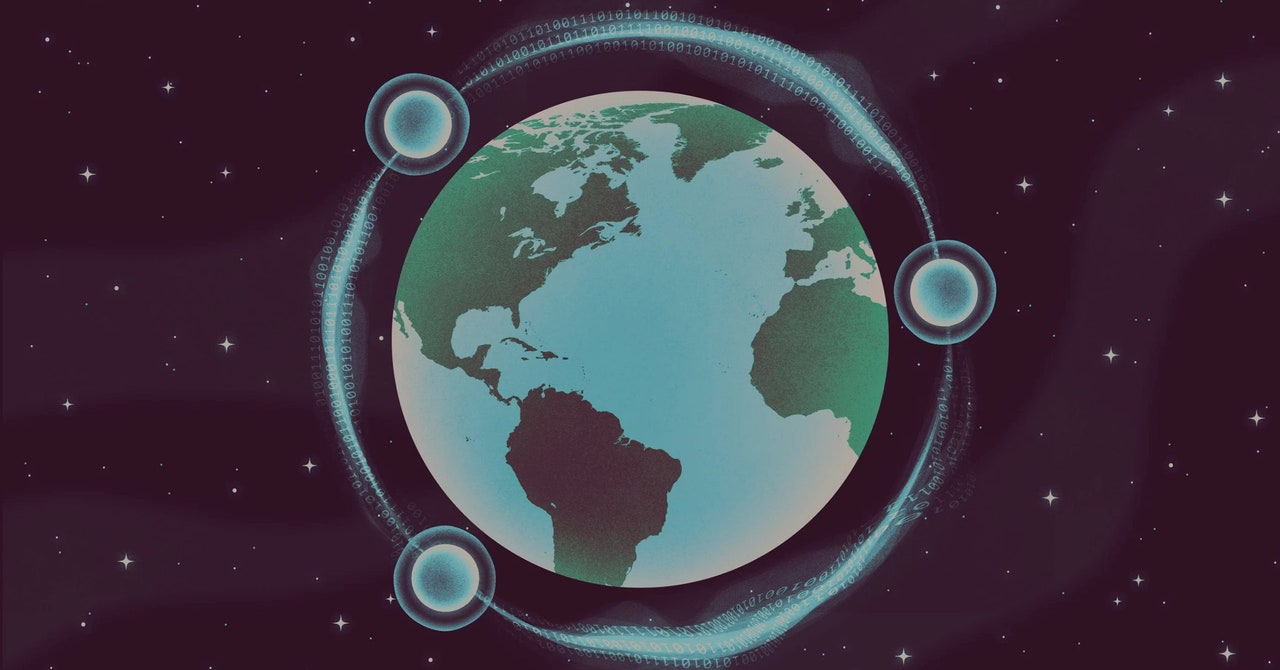
Last month, three scientists won the Nobel Prize in Physics for their work proving one of the most counterintuitive yet consequential realities of the quantum world. They showed that two entangled quantum particles must be considered a single system—their states inexorably intertwined with each other—even if the particles are separated by great distances. In practice, this phenomenon of “nonlocality” means that the system you have in front of you can be instantaneously affected by something that’s thousands of miles away.
Entanglement and nonlocality enable computer scientists to create uncrackable codes. In a technique known as device-independent quantum key distribution, a pair of particles is entangled and then distributed to two people. The particles’ shared properties can now serve as a code, one that will keep communications safe even from quantum computers—machines capable of breaking through classical encryption techniques.
But why stop at two particles? In theory, there’s no upper limit on how many particles can share an entangled state. For decades, theoretical physicists have imagined three-way, four-way, even 100-way quantum connections—the sort of thing that would allow a fully distributed quantum-protected internet. Now, a lab in China has achieved what appears to be nonlocal entanglement between three particles at once, potentially boosting the strength of quantum cryptography and the possibilities for quantum networks generally.
“Two-party nonlocality is crazy enough as it is,” said Peter Bierhorst, a quantum information theorist at the University of New Orleans. “But it turns out quantum mechanics can do stuff that even goes beyond that when you have three parties.”
Physicists have entangled more than two particles before. The record is somewhere between 14 particles and 15 trillion, depending on whom you ask. But these were only across short distances, just inches apart at the most. To make multiparty entanglement useful for cryptography, scientists need to go beyond simple entanglement and demonstrate nonlocality—“a high bar to achieve,” said Elie Wolfe, a quantum theorist at the Perimeter Institute for Theoretical Physics in Waterloo, Canada.
The key to proving nonlocality is to test whether the properties of one particle match up with the properties of the other—the hallmark of entanglement—once they’re far enough apart that nothing else could cause the effects. For example, a particle that’s still physically close to its entangled twin might emit radiation that affects the other. But if they’re a mile apart and measured practically instantaneously, then they are likely linked only by entanglement. The experimenters use a set of equations called Bell inequalities to rule out all other explanations for the particles’ linked properties.
With three particles, the process of proving nonlocality is similar, but there are more possibilities to rule out. This balloons the complexity of both the measurements and the mathematical hoops that the scientists must jump through to prove the nonlocal relationship of the three particles. “You have to come up with a creative way to approach it,” Bierhorst said—and have the technology to create just the right conditions in the lab.
In results published in August, a team in Hefei, China, made a crucial leap forward. First, by shooting lasers through a special type of crystal, they entangled three photons and placed them in different areas of the research facility, hundreds of meters apart. Then they simultaneously measured a random property of each photon. The researchers analyzed the measurements and found that the relationship between the three particles was best explained by three-way quantum nonlocality. It was the most comprehensive demonstration of three-way nonlocality to date.


